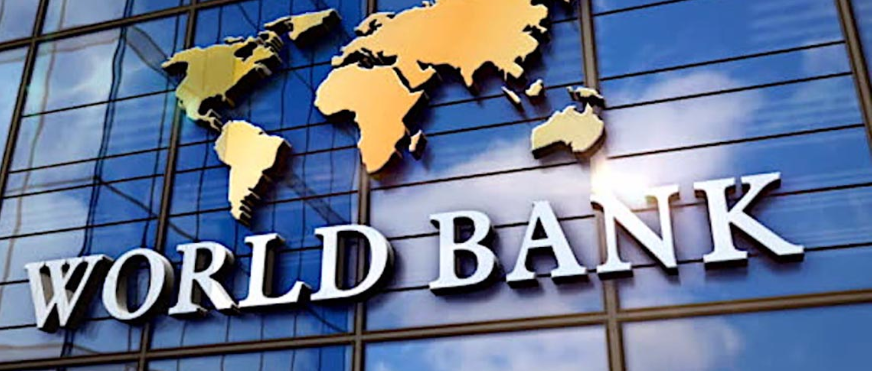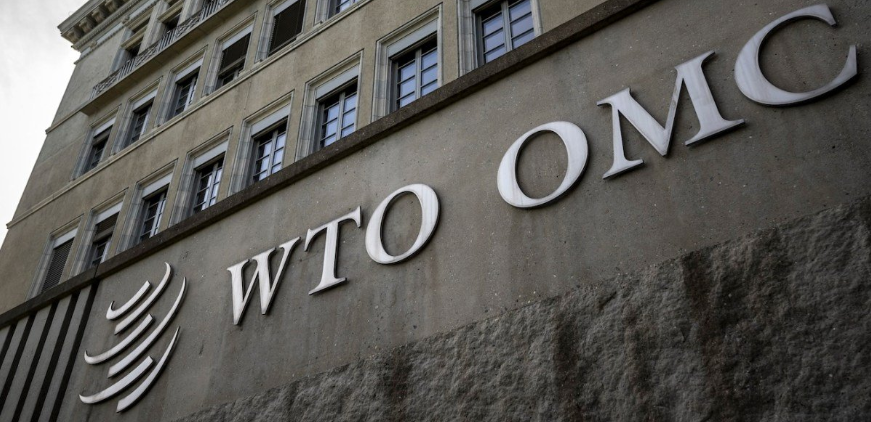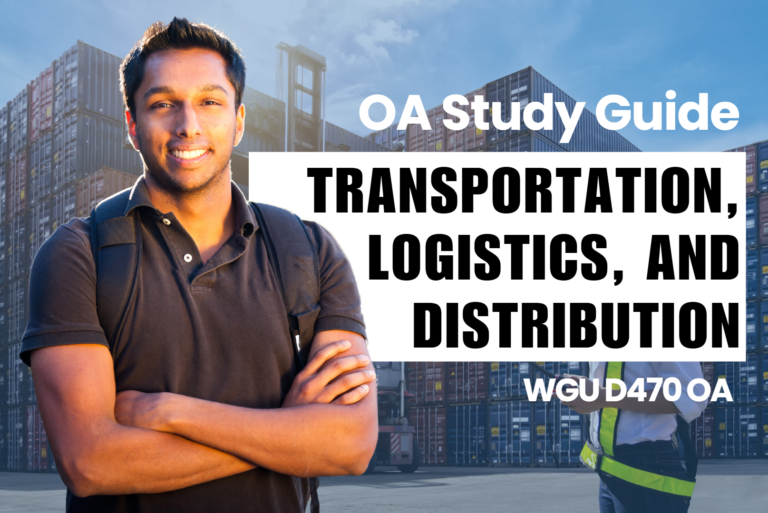WGU D080 OA Study Guide II - 2025 | Exploring Global Economic and Environmental Systems📖
Welcome to the colorful world of international business and environmental concern! Suppose you are involved in a massively multiplayer online game as if each country is a participant. Every man is talented in his way and every man has some weakness, but all players have to cooperate with each other to score. This isn’t just about sharing treasure or winning the last monster—it’s about balancing the whole global economy, fighting against poverty, and saving our home from actual oppressors like climate change or pollution.
In this article, we’ll explore two major themes that shape our interconnected world:
- The crucial roles of the IMF, World Bank, and WTO in keeping the global economy running smoothly.
- The innovative efforts to protect our environment through frameworks like the Kyoto Protocol, Paris Agreement, and NEPA.
When the reading is over, you won’t just learn what these systems are but how they affect businesses, governments, and your everyday lives. So, if you will dedicate time to learning about WGU D080 OA or simply want to be aware of a much broader context, prepare for a lot of valuable information, occasional references and examples, and, of course, occasional jokes to make the learning process as pleasant as possible. Let’s dive in!
How to Use This Guide for the WGU D080 OA Exam?📖
The D080 Managing in a Global Business Environment OA exam at WGU evaluates your understanding of global economic institutions, international trade regulations, and environmental policies. This guide simplifies the key concepts of the major functions, goals, and conditionalities of the IMF, World Bank, and WTO and Kyoto Protocol, Paris Agreement, and the National Environmental Protection Act to help you grasp the topics tested in the exam.
We also provide exam-style questions and practical applications to ensure you’re fully prepared for the questions on the WGU D080 OA exam.

Major Functions, Goals, and Conditionalities of the IMF, World Bank, and WTO For D080 OA📝
Understanding the roles of the International Monetary Fund (IMF), World Bank, and World Trade Organization (WTO) is essential for grasping the complexities of global economics. In the WGU D080 OA module, these organizations are highlighted for their influence on global stability and economic cooperation. Let’s delve into each one step by step.

1. International Monetary Fund (IMF)
The IMF is a global organization created to oversee the international monetary system—a framework that enables countries to engage in trade, investments, and financial transactions with one another. Its primary role, as emphasized in WGU D080 OA questions, is to ensure that the international flow of money remains stable and predictable. With this characteristic [stability] could be lacking, and some of the problems countries might experience include hyperinflation, devaluation of currency, and imbalances in trade. When it comes to the IMF, imagine it as a financial lifeguard that observes the global economy and comes in and helps countries in difficulty. For instance, if the circumstances that a country’s foreign exchange earnings from exports and other sources of such earnings have been affected by an external eventuality such as a decline in the price of oil or a financial crisis… To explain this, the IMF supports a country’s economy when the economy is weak due to factors outside the country’s control such as… a decline in the price of oil or the deterioration of the performance of the stock exchange.
Major Functions
- Financial Assistance:
- The IMF provides loans to countries experiencing economic crises, such as when they cannot pay their debts or import goods. This support stabilizes their economies by addressing issues like inflation or currency devaluation.
- For example, if a country’s currency loses its value rapidly, the IMF may lend funds to help stabilize the situation.
- Surveillance:
- The IMF analyses the developments in the economies, assesses how countries control and develop their economy, and sometimes advises governments on necessary measures for the proper performance of the countries’ economies.
- Think of this as regular check-ups to keep a country’s economy healthy and avoid crises.
- Capacity Development:
- The IMF provides capacity development assistance to enhance the capacity of countries’ fiscal and financial management departments, customs organizations, and treasury to design and implement sound policies through training and technical cooperation.
- At least it may assist a country to develop proper strategies for the formulation of proper taxes that will lead to better and increased revenue for the provision of public services.
Goals
- To foster trade and investment for the achievement of a balance of payments throughout the world.
- To enhance the growth of the economy and, in the process, address the issue of employment for people.
- To help reduce poverty in the world by promoting sustainable development.
Conditionalities when the IMF grants a loan When the IMF gives a loan, it exercises conditionality to make sure that the money is well used and the borrowing country embraces changes that will reduce the chances of borrowing the same money again in the future. These conditions may include:
- Policy Adjustments: Countries may need to reduce government spending or increase taxes to balance their budgets.
- Quantitative Targets: Specific measurable goals, like reducing inflation or increasing foreign currency reserves.
- Reforms: Countries may be required to strengthen governance or improve transparency in financial systems.

2. World Bank
In order to provide its financial services, the World Bank aims to reduce poverty and promote development in the countries of the world, which corresponds with the objectives stated in WGU D080 OA modules. Therefore, it works as an international financial organization that constructs and finances projects with the purpose of enhancing the standards of living in developing countries. It works as an international, cooperative bank that finances development projects that enhance the standard of living in less developed countries. Perhaps the best way to think of the World Bank is as a contractor and consultant who assists in putting the foundation for change in economic and social terms. It finances basic infrastructure projects such as schools, roads: clean water projects, and even renewable power projects. In addition to financial support, the World Bank offers policy advice and technical assistance to guarantee that these investments are well implemented and all deliverable in the long term for the development of regions that require the assistance.
Major Functions
- Development Assistance:
- The World Bank provides loans and grants to developing countries for projects that improve infrastructure, health care, and education.
- For example, it might fund the construction of a hospital in a rural area where access to medical care is limited.
- Technical Expertise:
- The World Bank advises countries on best practices for implementing large-scale development projects. This includes sharing knowledge on efficient ways to build infrastructure or manage resources sustainably.
Goals
- To end extreme poverty by helping people access basic needs like food, water, and shelter.
- To promote shared prosperity by improving income levels and living conditions in developing countries.
- To encourage sustainable development, ensuring that growth today does not harm future generations.
Conditionalities Loans from the World Bank often come with conditions to ensure the projects align with the organization’s goals:
- Social Investments: Countries may need to focus on improving education, healthcare, or social safety nets.
- Economic Reforms: Governments may be required to adjust policies to foster economic stability, such as privatizing inefficient industries or reforming tax systems.

3. World Trade Organization (WTO)
The WTO is an organization that oversees the Agreement and participating countries in the process of conducting international trade. As seen in the WGU D080 OA content, WTO is greatly involved in ensuring that globalization trading transparency and equality are achieved. It is more like a referee nurturing a trade match to start, determining the rules of the game, and stepping in to provide the final ruling should two countries disagree on a particular rule. In the capacity of introducing good news and turning violations into reportable cases, the WTO ensures that the international trading environment remains predictable and liberalized. Its work is aimed at the promotion of economic development and cooperation between countries, in particular through the provision of access to global markets for developing countries and the provision of the means to compete in them.
Major Functions
- Trade Negotiation:
- The WTO provides a platform where countries can discuss and agree on reducing trade barriers, such as tariffs or import quotas.
- For example, two countries might negotiate through the WTO to lower taxes on each other’s goods, making trade cheaper and easier.
- Dispute Resolution:
- When countries disagree over trade practices, the WTO acts as a mediator to resolve conflicts fairly.
- For instance, if one country accuses another of unfairly subsidizing its industries, the WTO steps in to settle the issue.
- Monitoring Trade Policies:
- The WTO reviews and evaluates the trade policies of its member countries to ensure they comply with global trade agreements.
- This helps maintain transparency and trust among nations.
Goals
- To promote free trade by reducing unnecessary barriers and encouraging open markets.
- To ensure trade flows smoothly, predictably, and freely across borders.
- To support developing countries in integrating into the global trading system, enabling them to benefit from international commerce.
Why Are These Organizations Important?
These organizations are vital to maintaining global economic stability and fostering growth:
- IMF prevents countries’ economic failures by lending money and offering some recommendations and guidelines.
- The World Bank reduces poverty by funding projects that improve living conditions and promote long-term development.
- The WTO equally opens the world trading forum through the protection of today’s unfair trade practices.
These institutions then ensure that the world is collaborating by coming up with systems that foster cooperation, growth, and success universally. For instance, a nation that is in the process of regaining certain economic recessions might obtain funds from the IMF, financial development from the World Bank, and trade agreements from the WTO. This concerted effort makes the world economy much more stable and enhances the quality of life on the globe.
Kyoto Protocol, Paris Agreement, and National Environmental Protection Act For D080 OA📝
Understanding global efforts to address climate change and protect the environment is essential for shaping sustainable business and societal practices. In the WGU D080 OA module, these frameworks are particularly significant, as they influence global policies and business strategies. This section explores three critical frameworks—the Kyoto Protocol, the Paris Agreement, and the National Environmental Protection Act (NEPA)—that have significantly influenced environmental governance and policy.
1. Kyoto Protocol
The Kyoto Protocol adopted on the 11th day of December 1997 came out to be one of the primary and foremost global treaties made to address climate change issues special reference to the emission of greenhouse gases. It provided legally binding targets for industrialized states for reductions in emissions to an average of 5.2 % below the 1990 levels, during its first commitment period, 2008-2012.
Key Concepts
- Binding Commitments: Developed countries, known as Annex I Parties, were required to meet specific emission reduction targets.
- Flexible Mechanisms: To help countries achieve their targets, the Kyoto Protocol introduced innovative mechanisms:
- Emissions Trading: Countries with excess emission allowances could sell them to those exceeding their limits.
- Clean Development Mechanism (CDM): Developed countries could invest in emission-reducing projects in developing nations and earn credits.
- Joint Implementation (JI): Countries could collaborate on projects to reduce emissions and share the resulting credits.
- Implementation and Compliance: Countries had to create national programs for emissions reduction and report their progress. A Compliance Committee ensured adherence to the commitments.
Impact The Kyoto Protocol was a significant step toward creating a global framework for reducing emissions. As highlighted in WGU D080 OA questions, it set the stage for countries to adopt sustainable practices and encouraged businesses to innovate. It encouraged investments in sustainable technologies and raised awareness about climate change. However, it faced criticism for:
- Excluding developing countries from binding commitments, which some argued hindered global progress.
- Its economic impact on industries reliant on fossil fuels.
- Complexity in its compliance mechanisms.
2. Paris Agreement
Building on the Kyoto Protocol, the Paris Agreement was adopted in 2015. This agreement, frequently discussed in WGU D080 modules, represents a turning point in international climate policy. This landmark accord emphasized voluntary and inclusive commitments from all nations to limit global warming to well below 2 degrees Celsius above pre-industrial levels, with efforts to cap the temperature rise to 1.5 degrees Celsius.
Key Features
- Nationally Determined Contributions (NDCs): Each country sets its own emission reduction targets based on its capabilities and circumstances.
- Global Stocktake: Every five years, countries assess their collective progress toward the Agreement’s goals.
- Financial Assistance: Developed countries are expected to provide financial support to developing nations for climate mitigation and adaptation efforts.
Significance
- The Paris Agreement adopted a more flexible and inclusive approach than the Kyoto Protocol, encouraging participation from all nations.
- It recognized the differing responsibilities and capabilities of developed and developing countries, promoting equity.
- The Agreement’s ambitious temperature goals reflect the urgency of addressing climate change.
Challenges
- The voluntary nature of the commitments raises concerns about accountability and enforcement.
- Financial and technological support for developing countries remains insufficient, hindering their ability to implement climate strategies effectively.
3. National Environmental Protection Act (NEPA)
This is an essential act was adopted in 1969 as one of the federal requisites of environmental administration and management in the United States the subject of CNEPA is a factor of concern while undertaking the course WGU D080 OA since it has to do with the participation of the environment in federal activities.
Key Components
- Environmental Assessments (EAs): Federal agencies write EAs to decide whether or not a proposed project will have a noticeable impact on the environment.
- Environmental Impact Statements (EISs): Where an environmental project has a substantial effect potential impact, then a special comprehensive EIS must be prepared, describing the impact and different approaches that can be taken.
- Public Involvement: NEPA encourages openness in the decision-making process and actually enlists the public to study EAs and EISs and then make their stand.
Importance
- NEPA ensures that environmental considerations are integrated into federal decision-making processes.
- It fosters sustainable development by promoting informed decisions and public engagement.
Criticisms
- Bureaucratic delays and inconsistencies in implementation across federal agencies.
- Limited scope in addressing state or local environmental issues.
- Complex processes that may discourage public participation.
Conclusion
The Kyoto Protocol, and the Paris Agreement together with the NEPA form instruments in the global and national system addressing environmental issues. Both have their advantages and disadvantages, yet taken together they point to three significant conclusions: active, effective climate change governance requires proactive government and global cooperation; climate change and sustainability cannot be effectively addressed simply through technocratic, rationalist top-down means alone; contemporary climate change and sustainability discourses cannot be understood or addressed in isolation from citizens and the public. Parents through the knowledge gained from these frameworks are in a better position to influence society and create a sustainable world.
Tired of reading blog articles?
Let’s Watch Our Free WGU D080 Practice Questions Video Below!

Mastering WGU D080 OA Concepts: A Final Note📖
Well done for completing this education-rich exploration of the operations of the IMF, World Bank, and WTO, as well as the structures of the Kyoto Protocol, Paris Agreement, and NEPA. These topics may look very broad and hard at initial levels, but they are in fact the basis of how evolved our world is in terms of collaboration in terms of economy as well as environment.
Those who want to master these ideas should note that this knowledge is not an abstract theoretical construct – it is about the processes that define stability and development on the global level. As you prepare for your final OA in the WGU D080 OA module, remember that these topics are not just theoretical. They influence real-world decisions, from international policies to corporate strategies, and even local community actions.
So, keep these insights fresh in your mind, revisit the material if needed, and approach your OA with confidence. You’ve got this! Good luck, and may your understanding of global business and environmental management help you ace that final test and beyond






